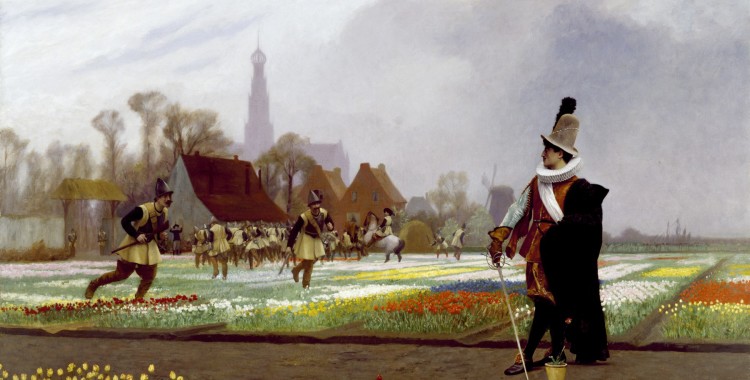
Art & War: The Walters Museum
November 01, 2015
by Diana Greenwald | Filed in: Collectors
The Walters Art Museum in Baltimore, Maryland is the product of two generations of Walters collectors: William and Henry, father and son. As the product of multi-generational collecting, the museum presents an interesting case study to explore issues of the relationship socio-economics and taste discussed in the previous post. How did the self-made William’s taste differ from that of his privileged son? Did William’s almost lifelong residence in Baltimore form his tastes in a way that differed from Henry, who became a major player in the New York philanthropic and art worlds? These complicated questions cannot be answered in a format much shorter than a book, much less in a blog post. However, there is an incident in the elder Walters’ collecting pattern that is thought-provoking, even in brief. The principal source of information for this discussion is William R. Johnston’s William and Henry Walters: The Reticent Collectors and The Taste of Maryland: Art Collecting in Maryland, 1800 -1934 (1984).
A successful liquor-importer, William Walters began collecting art in earnest in the mid-1850s. His early collection featured American art, particularly Hudson River School painting. He patronized Asher B. Durand, Frederic Edwin Church, John Frederick Kensett among other American artists. However, this U.S.-focused patronage stopped abruptly in the 1860’s. At the outbreak of the Civil War, Walters—a southern sympathizer—sailed for Europe with his family. They remained abroad (primarily in France) from 1861 until the end of the war in 1865. Also during this time, Walters sold his entire collection of American art. He then began to collect contemporary European art (primarily French) and, later, Asian decorative arts. Why did a collector reverse his tastes so dramatically?
There are several possible explanations. Perhaps he discovered his preference for European art while abroad—it was one of his earliest opportunities to see large amounts of European art—and then liquidated his existing holdings to pay for new ones. Or, a combination of budget constraint and newfound access to a supply of different art could have shifted his collecting habits. Finally, it is possible that neither explanation is accurate; politics may have formed Walters’ demand for art. The artists—and landscapes—of the Hudson River School were in the Union. They were on the opposite side of the on-going conflict from the elder Walters.
Though Walters never explicitly addressed his decision to abandon nearly interest in American art, the collections of his friends and Baltimore contemporaries may provide some clues. Maryland was a slave state that did not secede. Its political position was contested, and its art collectors were similarly divided. The collector James Howard McHenry (1820 – 88) was from a prominent Maryland family. However, he was raised abroad (he was the son of a diplomat) and attended Harvard. He collected art by American artists both before and after the war. His holdings included works by Hiram Powers, whose art was closely linked to the abolitionist movement. By contrast, the collecting patterns of J. Stricker Jenkins—a native Baltimorean—echoed those of Walters. Before the war, he and his father were active supporters of the top Hudson River School artists. After the war, his new acquisitions were contemporary European. In fact, Walters and Stricker purchased art through the same European agent, George Lucas. Both Walters and Stricker—and their fortunes—thrived at the conclusion of the war and the reunification of the country. They accepted the Southern defeat. However, perhaps lingering evidence of their prior sympathies existed in their art collections.
Cultural Economics Workshop: Collectors >>
<< Single-Collector Museums, an Important Source
